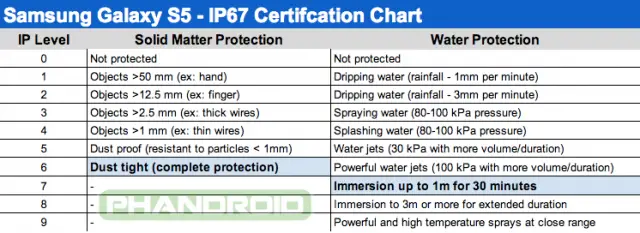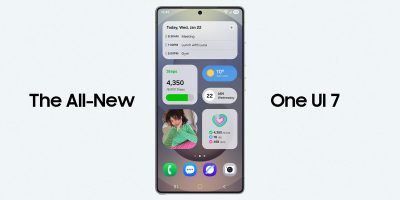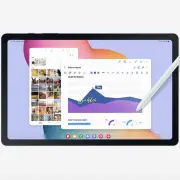
If you read our Galaxy S5 Review then you know I dropped it in the toilet. If you read our Galaxy S5 vs HTC One M8 comparison then you also know I put it under the kitchen faucet. Despite being touted as dust and water resistant with IP67 Certification, my Galaxy S5 got water damage.
It was my fault. User error. An ignorant mistake that I hope other Galaxy S5 owners will learn from: the IP67 certification has limits and you should understand them before doing something stupid (like I did).
Below you’ll find the nitty gritty details, but the bottom line: IP67 isn’t only about depth, it’s also about water pressure. The higher the water pressure the less safe your phone, so continue to avoid water contact and instead consider the IP67 certification as a safety net against the worst case scenarios.
What is IP67 Certification?
Samsung has labeled the Galaxy S5 with IP67 Certification so to understand its level of water resistance we need to understand what IP67 certification means. The certification system is administered by the International Electrotechnical Comission and can be broken down as follows:
- IP stands for Ingress Protection
- The first digit is on a scale of 0 to 6 and represents the level of dust protection the device offers (higher numbers are better)
- The second digit is on a scale of 0 to 9 and represents the level of water protection the device offers (higher numbers are better)
Based on this scale (and according to the IEC), the Samsung Galaxy S5 should offer full dust protection and water protection when submerged in up to 1 meter of water for a 30 minute duration.

But don’t assume that your phone is protected from all water as long as you remain above ground…
Submersion/Immersion vs Projection
If you look at values between 0 and 6 for liquid ingress protection you’ll notice it mentions nothing about submersion. It’s all about “projection” which starts with drip, increases to sprays and splashes, eventually landing at immersion at #7. You might assume that since the Galaxy S5 scores a 7, it would be immune to all categories before it, therefore successfully protected against all non-submerged sprays of water. That’s not necessarily the case.
Although levels 0 to 6 indicate different methods of uniting the device with water, the common denominator is the amount of force/pressure with which the water is being projected. The protection for drips, sprays, and splashes are measured in kPa (kilopascals) and although no such kPa statistic is offered for IP67, we can still find out the relative water pressure it faces when being submerged in 1m of water.

When comparing these ranks by water pressure you’re able to limit the variable of projection vs immersion. Think about it: surely a phone sitting in a shallow dish of water is less likely to be damaged than a phone getting blasted by a fire hose, regardless of whether or not it is submerged.
Water Pressure: Let’s Break It Down
The Ingress Protection scale is measured in kPa but let’s convert it to something we’re a bit more familiar with: PSI, aka pounds per square inch, which is the measurement most of us consider when inflating our car tires. Volume of water, duration of time, and distance from stream are all part of the calculation but let’s discard those for the sake of simplicity and focus solely on PSI.
- IP Liquid Levels 0 to 6: protection ranges from 30 kPa to 100 kPa (which equals 4.6 to 14.5 PSI)
- Level 7: according to this tool (and verified by other sources) water pressure for an object under 1M of water at sea level is 111 kPa (fresh water at sea level) which equals 16.1 PSI
So when considering the water pressure of submerging your phone in 1M based purely upon PSI, it faces greater pressure than drips, sprays, and splashes. Fire hoses typically operate at 150PSI or above, not to mention while dispersing outrageous volumes of water.
We should be able to safely assume, then, that our phone should be safe when subjected to situations where it contacts water with 16 PSI or below for 30 minutes or less.
So… what situations are those?
Rain, Shower, and Sink?
If we were playing Clue, the Galaxy S5 camera murder suspect would be Mr. Jackson, in the Kitchen, with the Faucet. There is no way for me to easily measure the water pressure coming from my sink, but some simple Googling reveals averages and norms that we can use for reference.
According to the EPA, common water pressure in most households is 60 PSI: that’s more than 3 times the safe limit for an IP67 device! Even the EPA’s “high efficiency” sink standards require a minimum of 20 PSI, which still surpass the 16.1 PSI for IP67 devices.

Also consider I was holding my device directly under the faucet, whereas the “water jets” for lesser IPX5 and IPX6 certification are tested at 3 meters- a distance of almost 10 feet.
This sheds a different light on what you can expect from an IP67 device and explains why Samsung and other manufacturers stress water resistant vs. waterproof.
How water resistant is the Galaxy S5?
Could your Galaxy S5 survive being pummeled in the sink, drenched in the shower, or stuck in the rain? Sure… it could, but the Galaxy S5’s IP67 is meant to help protect against accidents, not enable you to perform daring liquid-infused stunts.
Here’s what it all boils down to:
- The Galaxy S5 is water resistant, not waterproof
- IP67 protection isn’t only about depth of water… it’s also about water pressure
- Any situation where water is projected will increase water pressure and increase the risk of water damage
- Your phone will probably survive a rain shower, but an epic downpour could increase water pressure to unsafe levels
- Sink and shower faucets will vary in water pressure by house and fixture. Your phone will be safer under lighter streams and at points further away from the water source.
Although I’ve heard from a number of people that using their S5 in the shower hasn’t created any problems, proceed at your own risk and with the understanding that putting it directly under the stream of water may exceed the IP67 certification designation. Bringing it INTO the shower and keeping it on the side? Probably okay.
Partying and accidentally dropping your S5 in the toilet? I’m confident it’ll be fine… just wash your hands after you retrieve it.

Don’t forget that your battery cover and charger door MUST be sealed completely or none of this matters.
The Samsung Galaxy S5’s IP67 does not give you a warrant to be reckless with your phone, but rather gives you some peace of mind that should an accident or wet situation occur, your phone’s chances of survival are dramatically increased. In the end, regardless of Samsung’s IP67 certification and the ambiguity of the scale, no form of water damage is covered by warranty.
Now you know. Disregard the reviews and videos you’ve seen with bloggers doing crazy things with their Galaxy S5 in water, internalize the information above, and continue being careful with your phone around liquids. The Samsung Galaxy S5’s water resistance is awesome but the phone is FAR from waterproof… pass it on!
Thanks to Phandroid reader Jeremy Jameson whose comment on the original article led to this conclusion.








It should also be noted that water pressure can be an issue underwater, not just sinks and showers. If you were to have it underwater but move it around too fast that will cause more pressure. So if you drop it in water try not to remove it too fast.
Worked well enough for this! https://www.youtube.com/watch?v=aWZt2uLe7O4
Great post, folks need to know the difference.
As an engineer, I love this article.
In other words: We need IPS68!!!! Thanks.
IP69 just sounds like it would taste good too
Sounds like a sexual innuendo
Sounds like you might be Dr of gynecology and might be familiar of to which I am taking about??
In either case, the phone is still $h!t.
Interesting read. I now know more about IP67. Cool. But I rarely understand PSI, so Ima have to go read about that.
Though, since I know so little, I think it’s good if I learn the metric version of it since conversions would be easier. Hmm…
Learned something new today… thanks!
Perhaps Samsung should follow the Sony approach. Sony rate the Z1 compact as IP55 and IP58. So they give you a separate rating for water jet psi and maximum immersion depth and time.
Lots of phones could probably pass IP67 certification, manufacturers probably just choose not to pay for the certification. I’ve dropped a incredible 2 in the bottom of my full tub and it’s still working today.
really :P how long did you leave it there? you are really taking water damage too easily.
Love the Smooth Criminal reference. You just made my day, Mr. Jackson ;)
“continue being careful with your phone around liquids” Folks should have continued this school of thought since day one anyway. Oh yeah, the dullards out there saw IP(insert number) and figured they’d start taking showers with their device. Oh humanity…
I disagree on showers etc. You do not get 60psi out of a showerhead. They limit waterflow, and as a result of it the pressure drops too. Next, the second water leaves a shower head, the pressure drops to zero. By the time the water hits the phone, some of the energy has dissipated already, and and only some of the kinetic energy will get converted back to pressure, but not nearly all of it as the water will splash in all directions. So my guess a shower and any kind of downpour for that matter would be just fine. In theory, anyway – not sure how much these ratings can be trusted in a statistical sense, including user errors in closing the phone properly….
Precise, this author has a very fundamental miscomprehension of how the pressure works .. and what it all means.
What I suspect is that he just DID NOT put in all the seals properly, so the water leaked in when he do the water test. The phone is rated as water proof when ALL the seals are properly placed.
You might be right but I’d never bring the phone in the shower. If there is a flaw/misuse, steam/vapor will find it.
The HTC One M8 is also water resistant-
https://www.youtube.com/watch?v=lhwvXTVQoPM
This doesn’t say anything about how it fared the week after…
Sigh .. you again mistook the convention. There is a big difference between under constant immersion and sprayed at a distance, even with a fire hose. And it is NOT just the rated pressure either. While the stated pressure of your pipe might be high, once the water leaves the pipe it decreases drastically. So unless you are holding it just mere milimeter away from the facet, the water pressure is unlikely to be even more than 10PSI.
In any case, The Xperia Z series has better water protection :D
Guess I won’t be using it in the hot tub.
idiotproof but not masochistproof.
These videos of s5’s being torture tested (and in most cases, surviving) still don’t give me the peace of mind to shower with my s5…I mean seriously, that’s just dumb anyway. However I have taken my s5 in the hot tub and watched Netflix without pause. Nice to be able to do that without dropping $80-100 on a lifeproof.